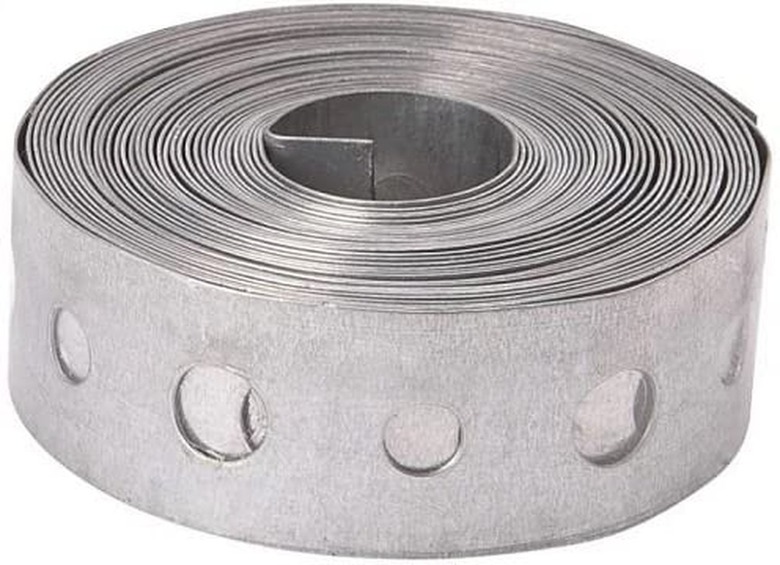How To Use Plumber's Pipe Hanger Strap
We may receive a commission on purchases made from links.
Plumber's pipe hanger strap is a critical tool of the trade. Plumbers rely on hanger strap to hold pipes in place or to attach them to floor or ceiling joists, wall studs, or other wood framing members, as required. Plumber pipe hanger strap can be installed with relative ease using tools you already have at home.
Plumber's pipe hanger strap is sold by the spool and has evenly spaced holes for easy placement of nails or screws. Hanger strap can be laid over or looped around pipe; then it is affixed to wood framing with nails or screws to keep the pipe in place. Strapping is easy to cut from the spool to any size you need, using tin snips or scissors, depending on the strap material.
Where Plumber's Pipe Hanger Strap Is Used
Where Plumber's Pipe Hanger Strap Is Used
Plumber's pipe hanger strap is used on water supply lines as well as vent and drain pipes. Unlike U-shaped rigid pipe straps, which come in specific sizes and are designed to secure pipes to a flat mating surface, hanger strap is flexible and can be fitted to any size of pipe in almost any location. It's most often used to suspend pipes between joists or to hang them from a ceiling or floor frame.
Different Types of Pipe Hanger Strap
Different Types of Pipe Hanger Strap
The two most common types of materials used to produce pipe hanger strapping are vinyl and metal. Metal strapping includes galvanized steel, copper-plated steel, copper, and stainless steel. Vinyl is often used on PVC drain waste pipes.
Metal strap is a bit more expensive but is more durable and has a higher weight rating than vinyl. Vinyl is more flexible than metal and is generally easier to work with. Vinyl also will not corrode, as metal can. If you're working with piping made of PVC, vinyl or any metal strapping is suitable. For metal strapping, use galvanized strap on galvanized pipe and use copper strap (with copper nails or brass screws) on copper pipe.
The other major difference among types of straps is the size and spacing of the holes. Some strapping offers just one hole size, such as 1/4 inch, while others offer two or three different sizes, such as 1/4, 3/8, or 1/2 inch. Spacing between holes can also vary by product, but all strapping has small spacing so there's a hole wherever you need one.
How to Use Pipe Hanger Strap
How to Use Pipe Hanger Strap
Using pipe hanger strapping is easy and can be customized to any situation. You simply pull out some strapping from the roll, dry-fit it to where it's going, and cut it to length. Use tin snips or aviation snips for metal strapping, or use scissors or a utility knife for vinyl strapping. Secure one end of the strap to the wood member with a screw or nail, wrap the strap over or around the pipe (you can wrap it once or twice, as desired), pull the loose end of strap taut to remove any slack, and secure the loose end to the wood. One screw or nail on each end will hold the strap in most cases, but it's a good idea to use two fasteners at each end for insurance.
